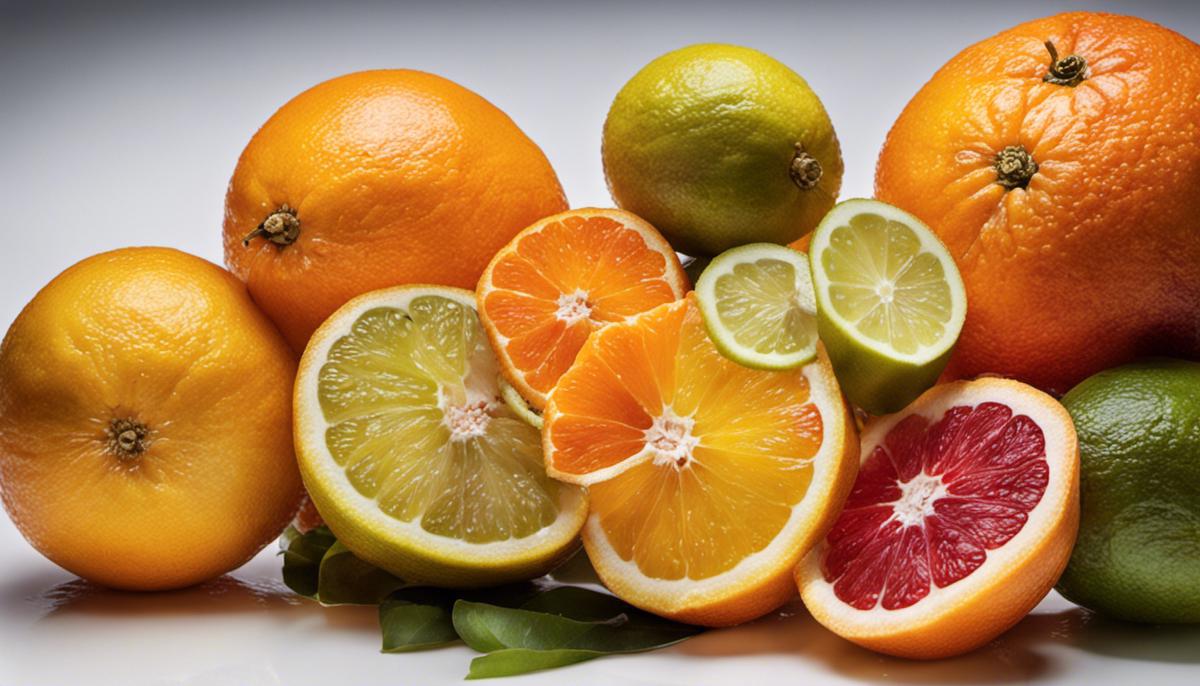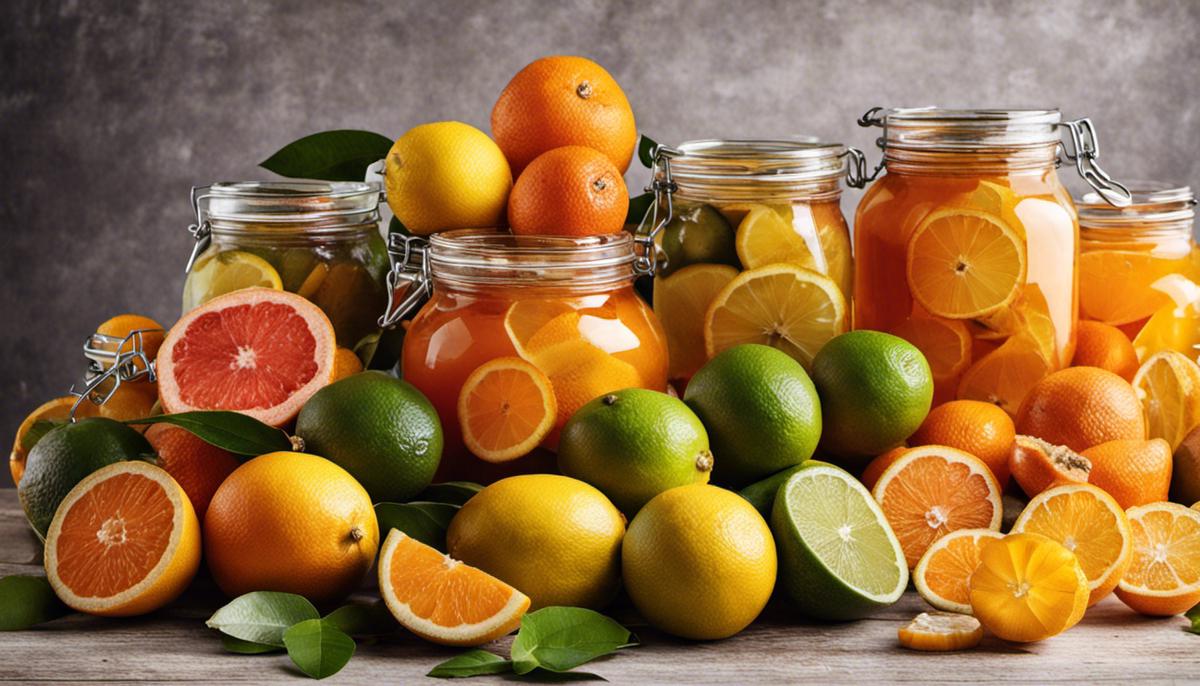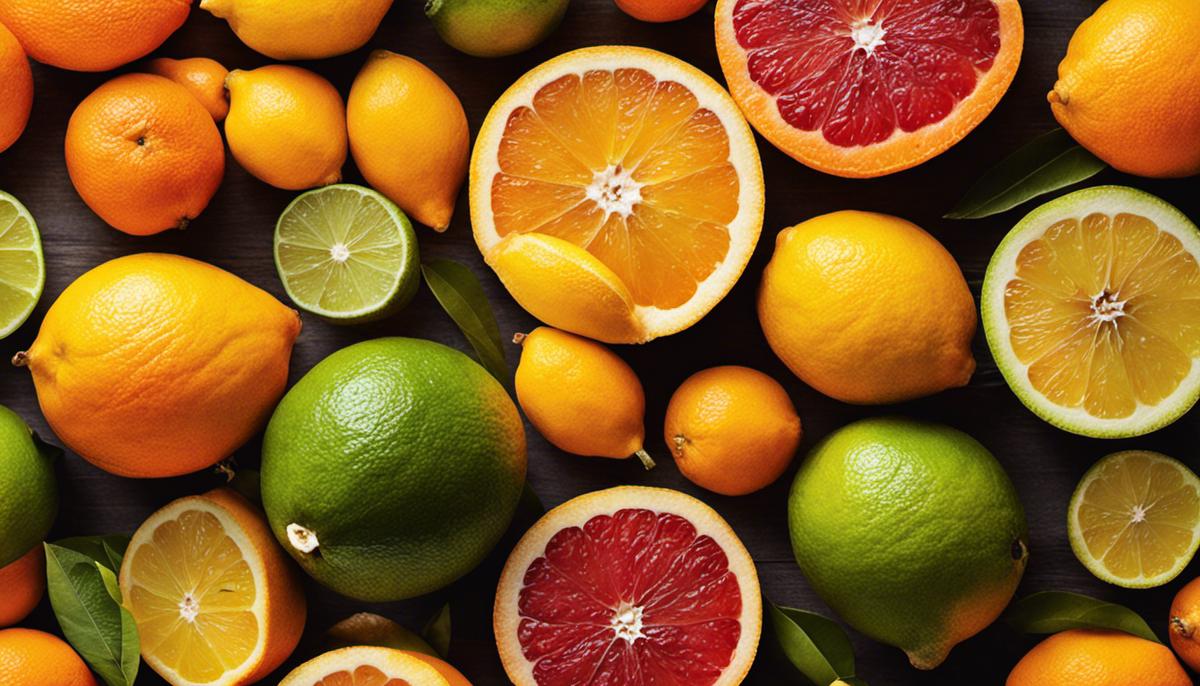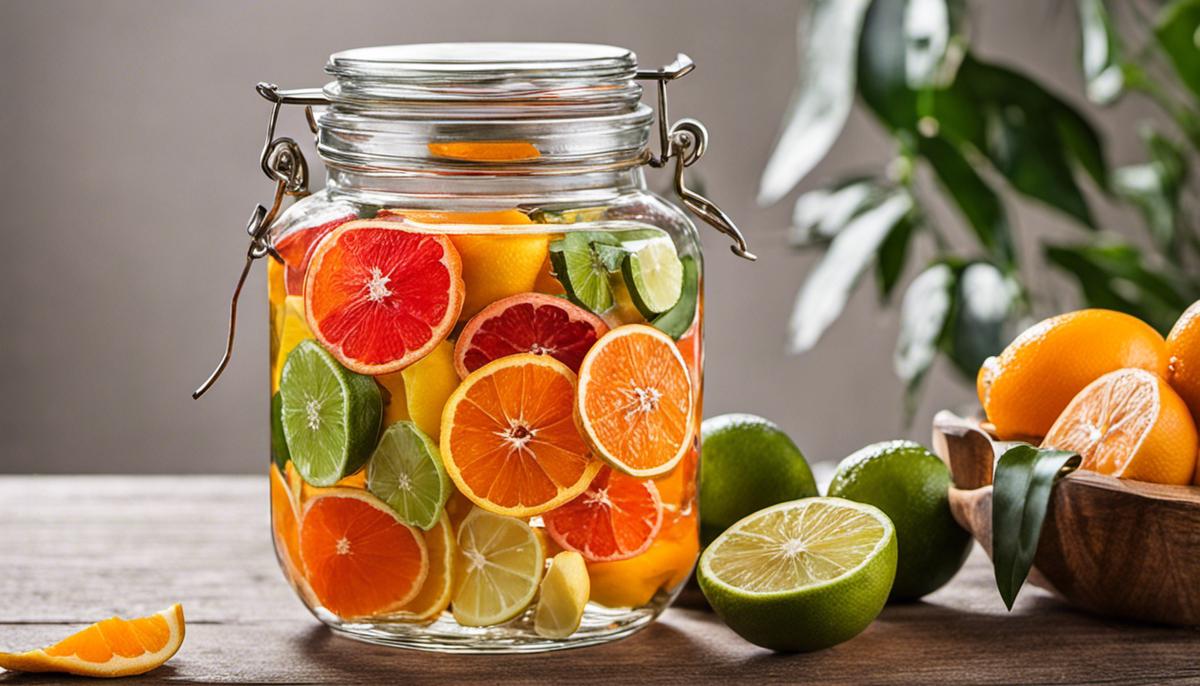When life gives you lemons, or any citrus fruit for that matter, preserve them! Preserving citrus fruits not only extends their shelf life but also allows you to enjoy their zesty kick throughout the year.
In this enlightening discourse, we delve into the intricacies of citrus preservation techniques, as we explore methods like drying, freezing, canning, and making preserves or pickles. You will be introduced to the tools required for these techniques, along with a step-by-step guide to preparation and sterilization procedures.
Not only that, but this discourse will also provide information on how to safely store and use these preserved citrus exotics, to ensure your kitchen never lacks a sprinkle of tangy excitement.
How to Preserve Citrus Fruit
Understanding Citrus Preservation Techniques:
To preserve citrus fruits, first, ensure the fruit is fresh and of sound quality. Discard fruits that are overripe, blemished, or damaged. Keep in mind that each preservation method has its own advantages and disadvantages, and the one you choose depends on your personal preferences, as well as the type of fruit.
Drying Citrus Fruits:
One classical method of keeping citrus for a long time is by drying the fruit. This helps to concentrate flavor and sugar content.
To dry citrus fruits properly, slice the fruit thinly and arrange the slices on a drying rack or baking sheet. Set your oven on the lowest setting or use a food dehydrator. It can take several hours up to a day to fully dry fruit.
Drying is a relatively straightforward process, though it can be time-consuming and may not suit all types of fruits. However, dried citrus can be used in a myriad of ways, from cooking to cocktail garnishes, making it a versatile option.
Freezing Citrus Fruits:
Freezing is another great way to preserve citrus fruits. Keep in mind that once frozen and then thawed, the texture of the fruit will change and it will become softer, making the fruit excellent for use in recipes where you will cook or bake it further, but not suitable for eating fresh.
To freeze citrus, simply wash the fruit, slice it, remove the seeds, and freeze it on a baking sheet. Once the slices are frozen, you can transfer them to an airtight bag or container. This approach prevents the slices from sticking together.
Canning Citrus Fruits:
This method is a bit more time-consuming, requiring some equipment and extra steps, such as sterilizing and heating jars, but it does open up a range of possibilities. People have been canning citrus in the form of marmalades, jellies, and even in pieces of the whole fruit.
Clean and prepare your fruit before slicing it into sections. Sterilize jars and lids, pack the fruit into the jars, and cover it with syrup or juice. Process the jars in a water bath canner.
Making Preserves and Pickles:
Another common method of preserving citrus fruits is by making preserves or pickles. This process involves combining citrus with sugar or vinegar and then cooking it until it achieves a texture similar to jam or jelly.
These methods have a high yield and are excellent for providing a long-term storage solution for citrus fruits. The downside is that they alter the taste and texture of the fruit significantly. Still, they are an excellent way to incorporate citrus flavors into your meals in a variety of ways, such as in a sandwich, on toast, or as a marinade.
Understanding these preservation methods’ ins and outs can help you make the most out of your citrus harvest or bulk purchases, giving you a delicious taste of summer any time of the year.

Supplies and Preparation Procedures
Supplies Needed for Citrus Fruit Preservation
For this preservation process, you’ll require the following tools:
- Glass jars with tight-sealing lids
- A large pot for boiling
- A kitchen knife
- A fruit zester
- A juicer (optional)
- A pressure canner (for large quantities)
- High-quality freezer bags (if you plan to freeze the fruit)
Be sure to select jars of appropriate size based on the quantity of citrus fruit you plan to preserve. Freeze bags should be food-grade with a zipper top.
Preparation of Citrus Fruits for Preservation
Start with washing your citrus fruits under cold running water to remove any dirt or pesticide residue. Pat them dry with a clean towel.
For zesting, use a zester or the small side of a grater. Be careful to only remove the colored outer layer of the skin; avoid the bitter, white pith.
Peel your cleanse citrus fruits. If you would like to keep the peels for other uses (like candying, or using them in cooking), remove them in large sections. Chop or segment the peeled fruits, remove the seeds, and set the pieces aside.
If you are planning on juicing the citrus fruits, cut the fruit into half and use a juicer or a citrus press.
Sterilizing the Jars
Before you start preserving, it is crucial to sterilize your glass jars and their lids. This will eliminate any bacteria, yeast, or fungi present, and ensure your preserved fruits’ longevity.
Place the jars and lids in a large pot, completely submerge them in water, and bring to a boil. Boil for about 10-15 minutes, then use a pair of tongs to carefully remove and drain them, allow to air-dry on a clean towel.
For the freezer bags, they must be brand new. It isn’t necessary to sterilize them as they are pre-packaged to be free from bacteria and they will be placed in the freezer.
Once all these steps are completed, you are ready for the preservation process of your citrus fruits. Regardless of which technique you decide to follow (canning, freezing, drying, etc.), the initial preparation of the fruit and supplies remains the same.

Preservation Process
Selecting and Preparing Citrus Fruits
Pick firm, ripe citrus fruits without any cuts or bruises; the healthier the fruit, the better the preservation results. Wash the fruits thoroughly under cold, running water. Dry them off in order to prevent mold growth during preservation.
Preserving Citrus Fruits by Drying
Slice the fruit thinly, and place the slices in a single layer on dehydrator trays or baking sheets. Dry the citrus fruits at 130–135 degrees Fahrenheit. Turn the slices or rotate the trays every few hours to ensure even drying.
This process takes 12-14 hours or even up to 24 hours, depending on the thickness of the slices. Once dried, cool the slices to room temperature and store them in an airtight container in a cool, dark place.
Preserving Citrus Fruits by Freezing
Peel the fruit and separate it into segments. Put these segments on a baking sheet with some space between each one. Freeze them until firm then transfer them to freezer bags or airtight containers. Label and date the containers to keep track of how long the citrus fruits have been preserved.
Canning Citrus Fruits
To can citrus fruits, you need a sterile jar, the fruit, and sugar syrup. Peel the citrus fruits and separate them into segments. In the jar, add a layer of fruit followed by a layer of sugar, repeating this until the jar is full. Ensure the fruit is covered by the syrup.
Put the lids on the jars and process them in a water bath for about 10 minutes. You will notice the lids popping, indicating the jars have been sealed. Store the jars in a cool, dark place and wait at least a week before consuming them in order to let the citrus fruits fully absorb the syrup.
Storing Preserved Citrus Fruits
Regardless of the preservation method, stored citrus fruits must be kept in a cool, dark, and dry place. This reduces the chances of molding and helps maintain the quality of the fruit. Regularly check on the fruits. If you see or smell anything off, discard the fruit immediately to avoid food-borne illnesses.
Remember, preserved citrus fruits, like all preserved foods, should still be eaten within a certain timeframe. Dried citrus fruits can be consumed within six to 12 months, while frozen and canned ones should ideally be eaten within one year.

Storage and Usage Tips
Storing Preserved Citrus Fruits
Preserved citrus fruits should be stored in a cool, dry area away from light. Glass jars with airtight seals provide optimum storage conditions. Once opened, the preserve should be refrigerated immediately and consumed within two weeks.
Signs of Poor Preservation & Botulism
Learning how to recognize poor preservation and signs of foodborne botulism is critical. Any signs of mold or an unusually sour smell may indicate that the preserve has gone bad. Jars that are bulging, leaking, or have loose lids should not be used as these are indicators of potential botulism.
Botulism symptoms may include nausea, vomiting, abdominal cramps, difficulty swallowing or breathing. If you experience these symptoms after consuming preserved citrus fruits, seek immediate medical attention.
Usage Tips for Preserved Citrus Fruits
Preserved citrus fruits can perk up many dishes with a pop of flavor and acidity. They can be a great addition to salads, poultry, and fish dishes. Chopped preserved lemon works wonders in couscous, while preserved orange slices can be used in sweet and savory sauces. The brine can also be utilized in marinades, dressings, or cocktails.
Maximizing The Lifespan of Preserved Citrus Fruits
Freezing is an excellent preservation method for citrus fruits. Simply arrange slices or sections on a baking sheet, freeze until solid, then transfer to a freezer-safe container. When it comes to eating, frozen citrus can be added to smoothies, used in cooking, or thawed and consumed as is. The freezing process might change the texture slightly, so it’s best for citrus that’ll be cooked or blended.
Remember, preserved citrus fruit should not be consumed past its expiry date. Any modifications to the storage methods should respect safety considerations first.
Incorporating Preserved Citrus Into Meals
Adding preserved citrus fruit to your meals can enhance the flavors and introduce a new depth and complexity to your dishes. Try adding small amounts to your dishes, gradually increasing according to your palette.
Chopped preserved lemons can be added to a chicken or fish marinade for an exciting flavor. On the sweeter side, preserved oranges can be paired with dark chocolate for an elegant dessert.
Preserved citrus fruits offer a unique blend of tart and sweet flavors which can give a fresh twist to your everyday meals and dishes. Be creative and experiment!

Having covered the gamut of techniques and processes, we hope you now feel confident in preserving citrus fruit at home. It’s empowering to understand how to extend the life of your favorite fruits and use them creatively in different culinary creations.
Remember, the key to successful preservation is an understanding of the tools and techniques, diligent sterilization, and secure storage. Recognizing the signs of improper preservation is just as important for your safety. Now, the ball is in your court. Embark on your citrus preservation journey and add new life to your dishes with a burst of preserved fruit zest. Happy preserving!




